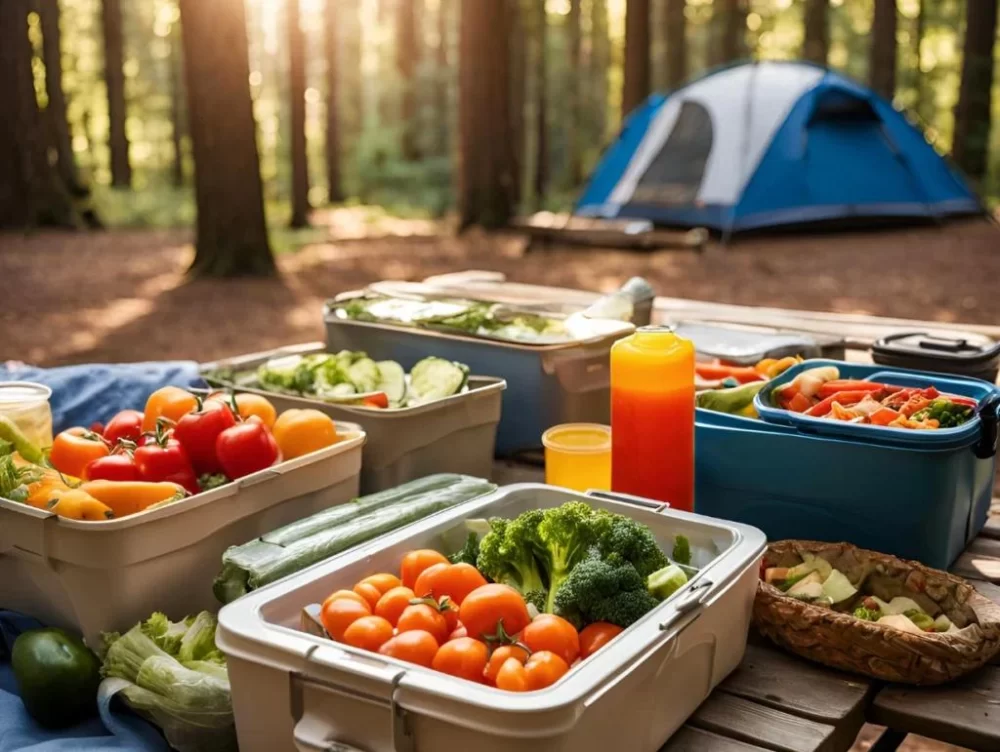How to Keep Your Food Safe While Camping: Essential Tips for Outdoor Adventures
- 1. Importance of Food Safety While Camping
- 2. Best Camping Food Storage Practices
- 3. Preventing Foodborne Illnesses on Your Camping Trip
- 4. Practical Camping Food Safety Stories and Tips
- 5. Takeaways and Next Steps for Safe Camping
1. Importance of Food Safety While Camping
When it comes to camping, keeping your food safe is just as important as enjoying the great outdoors. With the right precautions, you can avoid foodborne illnesses that could ruin your trip. Whether you’re hiking through the forests of the Pacific Northwest or camping under the stars in the Rockies, food safety is an essential part of any outdoor adventure.
Imagine this: you’ve trekked for hours, setting up camp near a serene lake, and you’re eager to cook a hearty meal over the campfire. But if your food isn’t stored or handled correctly, a small mistake can lead to contamination, leaving you with unpleasant consequences like nausea or food poisoning. In this article, we’ll guide you on how to keep your food safe while camping, ensuring your trip remains healthy and enjoyable.
2. Best Camping Food Storage Practices
The key to food safety during your camping trip starts with proper food storage. Here are some practical storage tips:
- Use Insulated Coolers: Keep perishable food like meat, dairy, and eggs in a well-insulated cooler to maintain a safe temperature below 40°F (4°C). Pack ice or ice packs to prevent your cooler from warming up.
- Keep Raw Meat Separate: To avoid cross-contamination, store raw meat in sealed containers or plastic bags. Always place them at the bottom of your cooler to prevent any juices from dripping onto other food items.
- Dry Food Storage: For non-perishable items, like nuts, dried fruits, or granola, use airtight containers. These will help protect the food from moisture and pests.
By taking these simple steps, you’ll help ensure your food stays fresh and safe for consumption during your camping trip.
3. Preventing Foodborne Illnesses on Your Camping Trip
Foodborne illnesses are one of the biggest concerns when camping. If food is not stored or handled correctly, harmful bacteria like Salmonella or E. coli can thrive, leading to serious health issues. But don’t worry, with the following tips, you can prevent these risks:
- Wash Your Hands: Always wash your hands with soap and water before preparing or eating food. If clean water isn’t available, bring along hand sanitizer.
- Use Clean Utensils and Cooking Equipment: Wash your camping cookware and utensils regularly with hot water and soap. Bacteria can linger on surfaces if not properly cleaned.
- Cook Meat to Safe Temperatures: Always use a thermometer to check the internal temperature of meat, especially poultry, pork, and ground beef. For example, poultry should reach 165°F (75°C), while ground beef should be cooked to 160°F (71°C).
By following these simple practices, you can significantly reduce your chances of foodborne illnesses, allowing you to enjoy the beauty of nature without worrying about your health.
4. Practical Camping Food Safety Stories and Tips
One of the best ways to learn about food safety while camping is from real-life experiences. Take Sarah, a first-time camper who went on a weekend hiking trip in the Adirondacks. She thought storing food in a single cooler would be sufficient, but a mistake in how she stored her raw chicken led to contamination, and she ended up getting food poisoning. This experience taught her the importance of separate storage for raw and cooked foods. Sarah now always packs two coolers: one for beverages and dry food, and another solely for perishable items.
Or consider Mark and Lisa, experienced campers who recently shared their top tips with us. They swear by using collapsible mesh bags for storing fresh vegetables, ensuring they stay cool and dry. They also recommend packing a small camping stove with a thermometer to double-check meat temperatures—something they learned the hard way after a few undercooked steaks on an early camping trip.
5. Takeaways and Next Steps for Safe Camping
Now that you know how to keep your food safe while camping, it’s time to put this knowledge into practice. Make sure to plan ahead for your food storage and handling needs, pack the necessary tools and equipment, and always prioritize hygiene. By doing so, you can ensure that your camping experience is not only fun but also safe.
Are you ready for your next camping adventure? Explore new camping destinations, try out different outdoor cooking techniques, and experience the thrill of being one with nature—all while staying safe and healthy. To make the most out of your camping trip, be sure to check out local campsites, tour guides, and other resources that offer expert advice and unique camping experiences.







